The 12Z Bismarck sounding was quite dry and and the surface observation at Bismarck was around 32F. Low level moisture has quickly rebounded this afternoon across central and western ND, however it remains dry across eastern ND. Dewpoints have come up into the upper 40s to near 50F and temperatures have climbed into the upper 70s. The AllSkyLAP CAPE loop clearly shows that instability is increasing across portions of ND with values topping out around 900 J/KG at 1930z, though most of the retrievals are GFS based because of cloud cover lingering in the area.
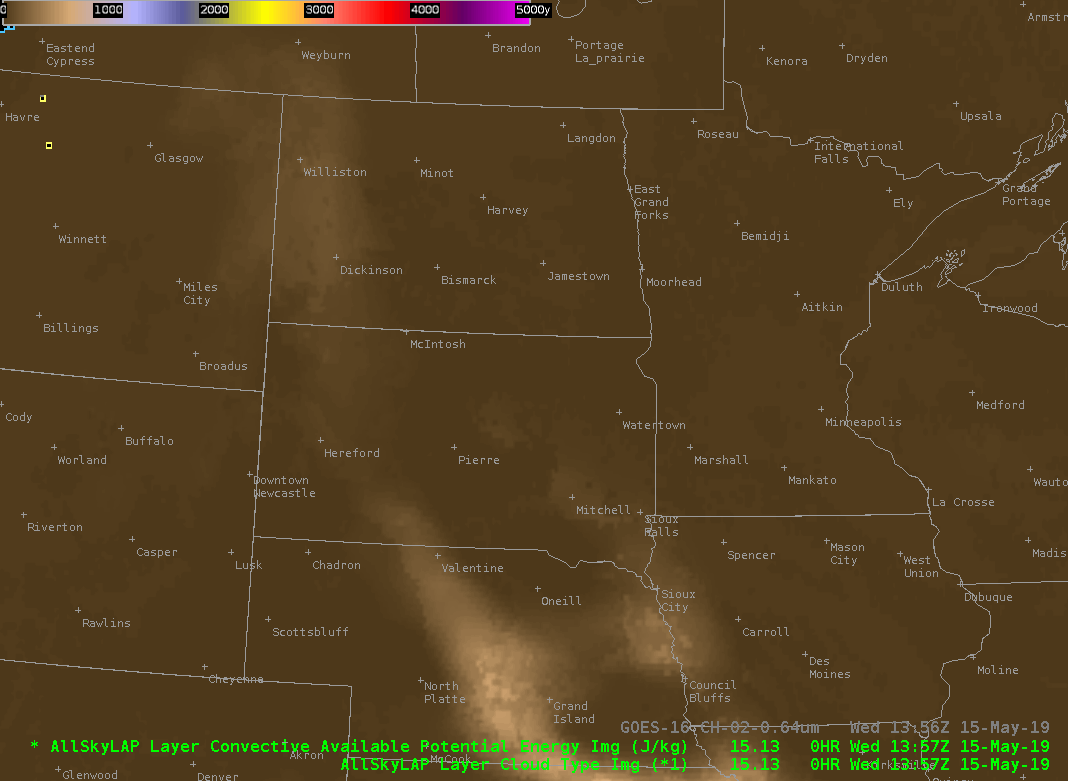
I decided to look at the NUCAPS soundings across the area to see if the CAPE values were similar. What I found was in the areas of low level moisture, the NUCAPS modified and unmodified sounding had similar MLCAPE values. However, as I checked NUCAPS soundings further east into the drier air, the un-modified soundings showed MLCAPE values that were far to high (should be near zero based on other observations), but the modified soundings were pretty spot on regarding the surface observations (especially Td, T may be slightly low), and thus MLCAPE values appeared to be more reasonable.

The next six images are the comparisons between the non-modified and modified NUCAPS soundings at three different locations. The first is near the peak in instability northwest of Bismarck, the second is east-northeast of Bismarck near the gradient, and the third is farther east into the drier air.
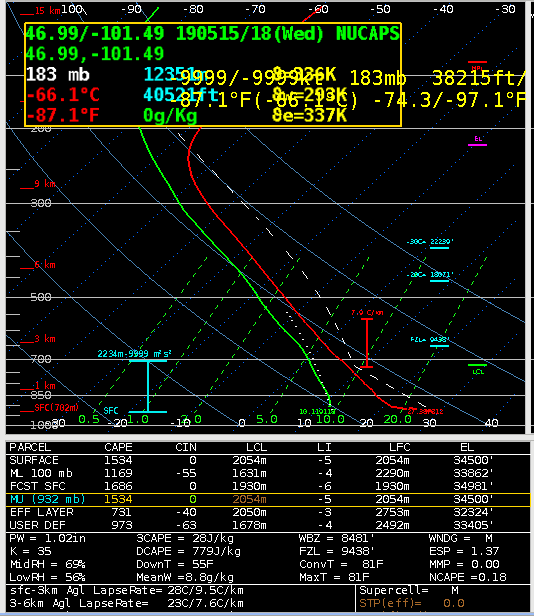
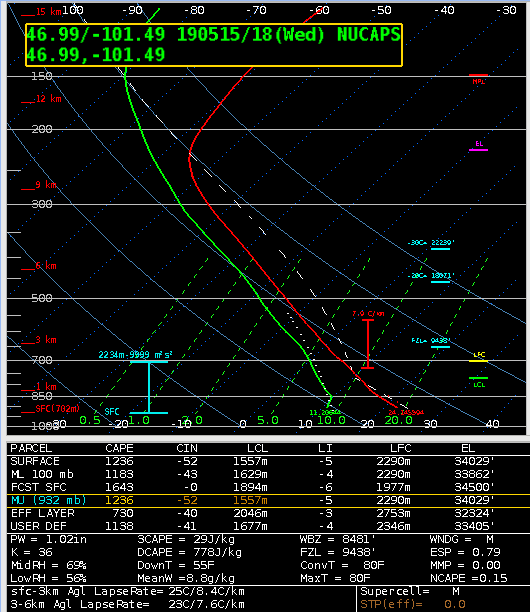
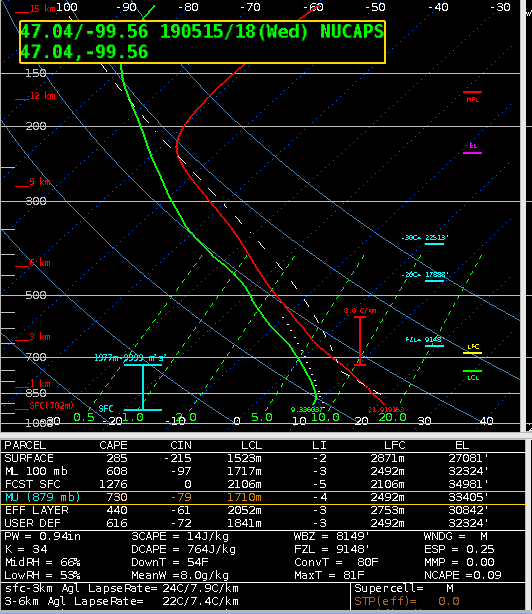
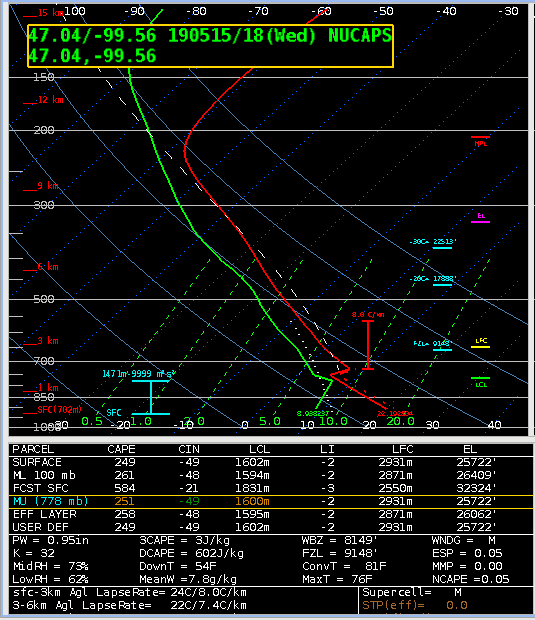
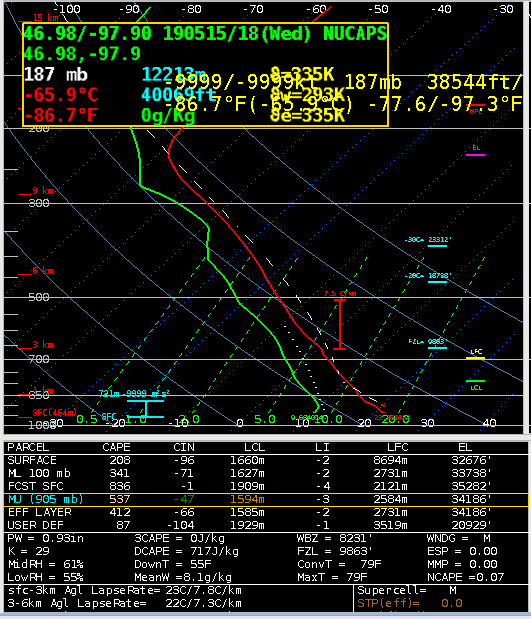
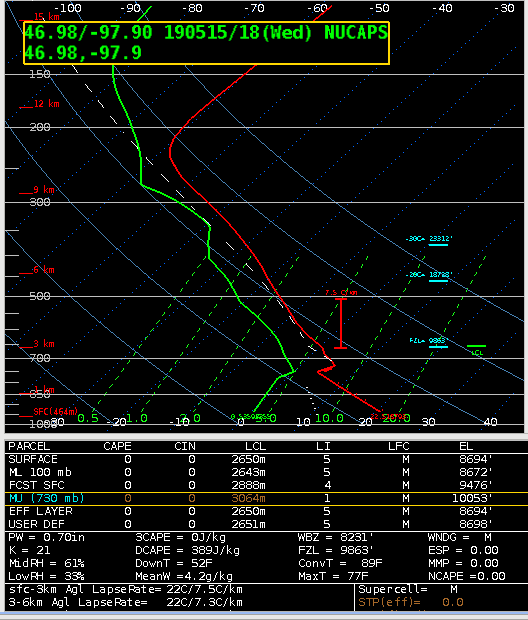
With that said, the modified soundings seemed to do a decent job capturing the gradient in CAPE. The values appear to be a bit high compared to the AllSkyLAP CAPE (1183 vs 750 J/KG around the same time), and high also compared to the SPC Meso Analysis Page (around 500 J/KG).
Quick update…..
The Bismarck office fortunately did a 19Z sounding, which showed very weak MLCAPE, only 22 J/KG! So both the AllSkyLAP CAPE and the NUCAPS were overdone.
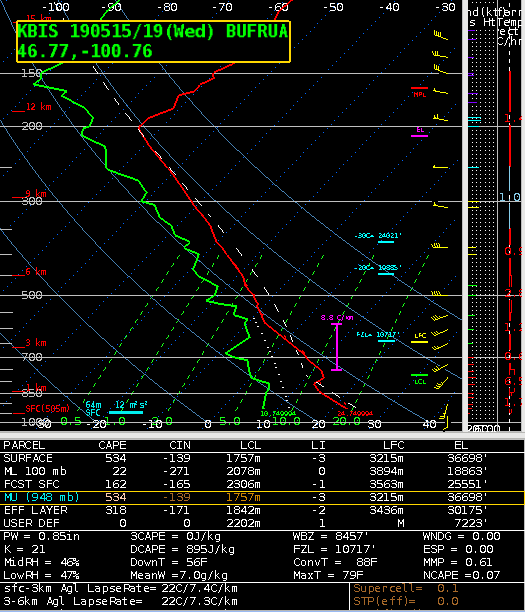
-Tempest Boomer
